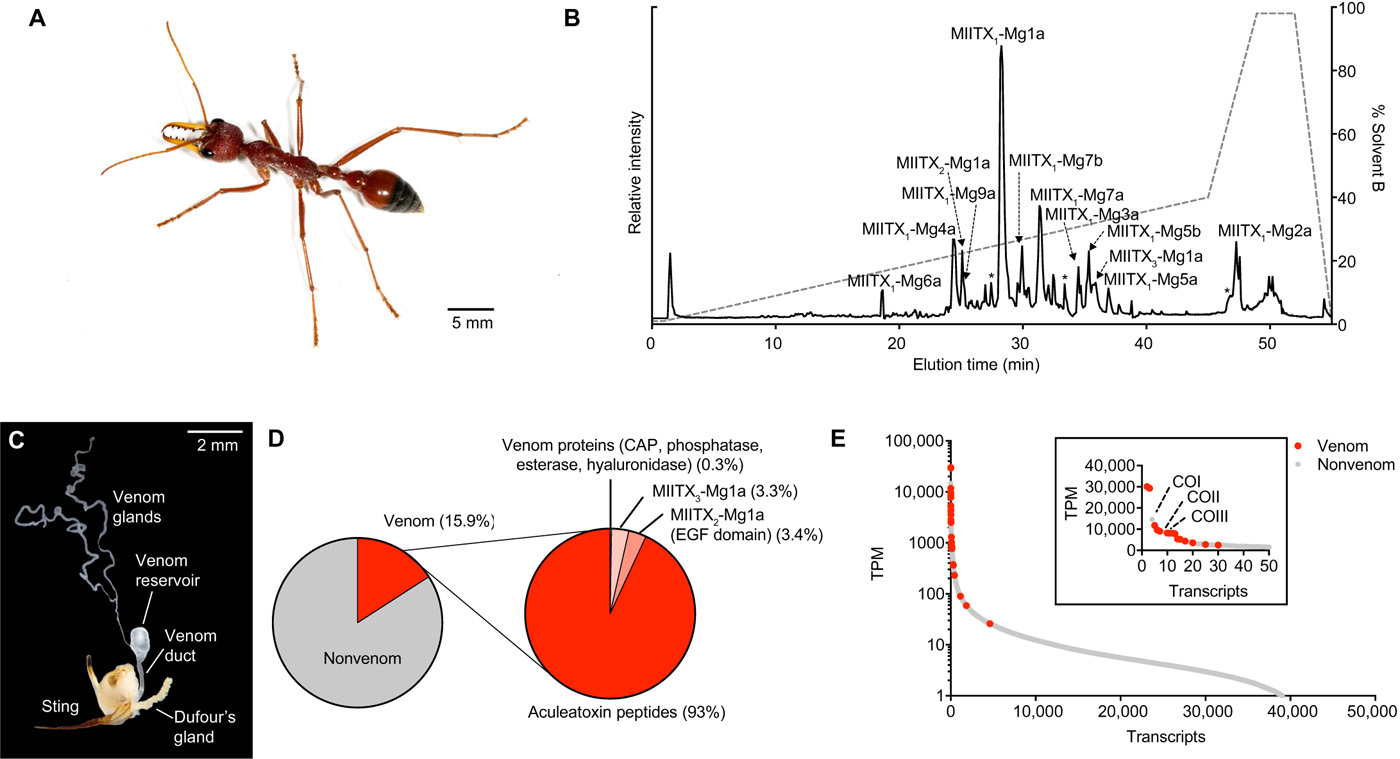Toxin evolution of an uncharted venomous animal
Venoms are complex cocktails composed mainly of ten to hundreds of proteins and peptides, known collectively as toxins. Venom has evolved on over hundred occassions among animals, but most of these remain completely unstudied.
In this master's project, the student will study a previously uncharacterized venomous species. The project will begin with fieldwork in Andalucia, where the student will participate in sampling the venomous species. Then, the student will apply an interdisciplinary approach to characterize the venom system in an evolutionary context.
Methods:
Field work, genomics, transcriptomics, proteomics, micro-CT
 Figure 1 from Robinson et al. A comprehensive portrait of the venom of the giant red bull ant, Myrmecia gulosa, reveals a hyperdiverse hymenopteran toxin gene family.Sci. Adv.4,eaau4640(2018). DOI:10.1126/sciadv.aau4640
Figure 1 from Robinson et al. A comprehensive portrait of the venom of the giant red bull ant, Myrmecia gulosa, reveals a hyperdiverse hymenopteran toxin gene family.Sci. Adv.4,eaau4640(2018). DOI:10.1126/sciadv.aau4640
Group and project
Our research group consists of nine members, each specializing in the evolution of venomous species, encompassing both invertebrates and vertebrates. Each member brings their unique expertise and professional networks to the table, offering the student an exceptional opportunity for knowledge acquisition and growth. We foster a collaborative environment through various activities, including a bi-weekly journal club where we engage in discussions of research questions related to venom and evolution in general. Additionally, we hold weekly lab meetings, providing a platform for both presenting and discussing the diverse projects that our group is actively involved in. Beyond our scientific pursuits, we also organize social events that contribute to build up our teamworking environment. The work carried out by the student will be part of a larger project funded by the Norwegian and European Research Councils, which aims to elucidate the venom system of Neuroptera by combining omics techniques, and comparative molecular and morphological evolution with evolutionary quantitative genetics. This multidisciplinary approach will elucidate the genetic and evolutionary mechanisms that underlie the emergence of venoms as complex evolutionary novelties and identify the molecular properties that facilitate or constrain their evolution across micro- and macroevolutionary timescales.
Please contact Eivind Andreas Baste Undheim or Marius Filomeno Maurstad for a meeting to learn more about the project.